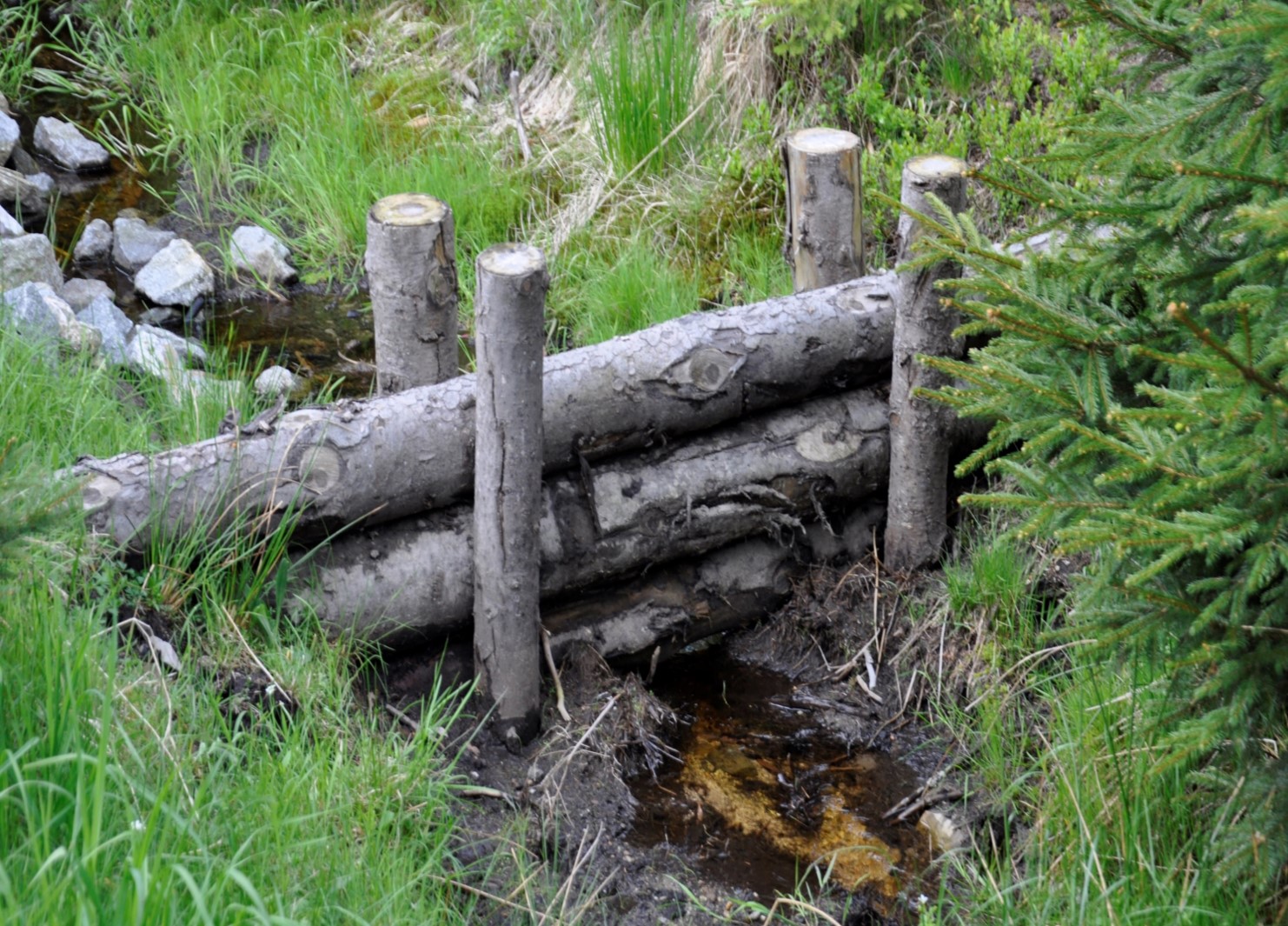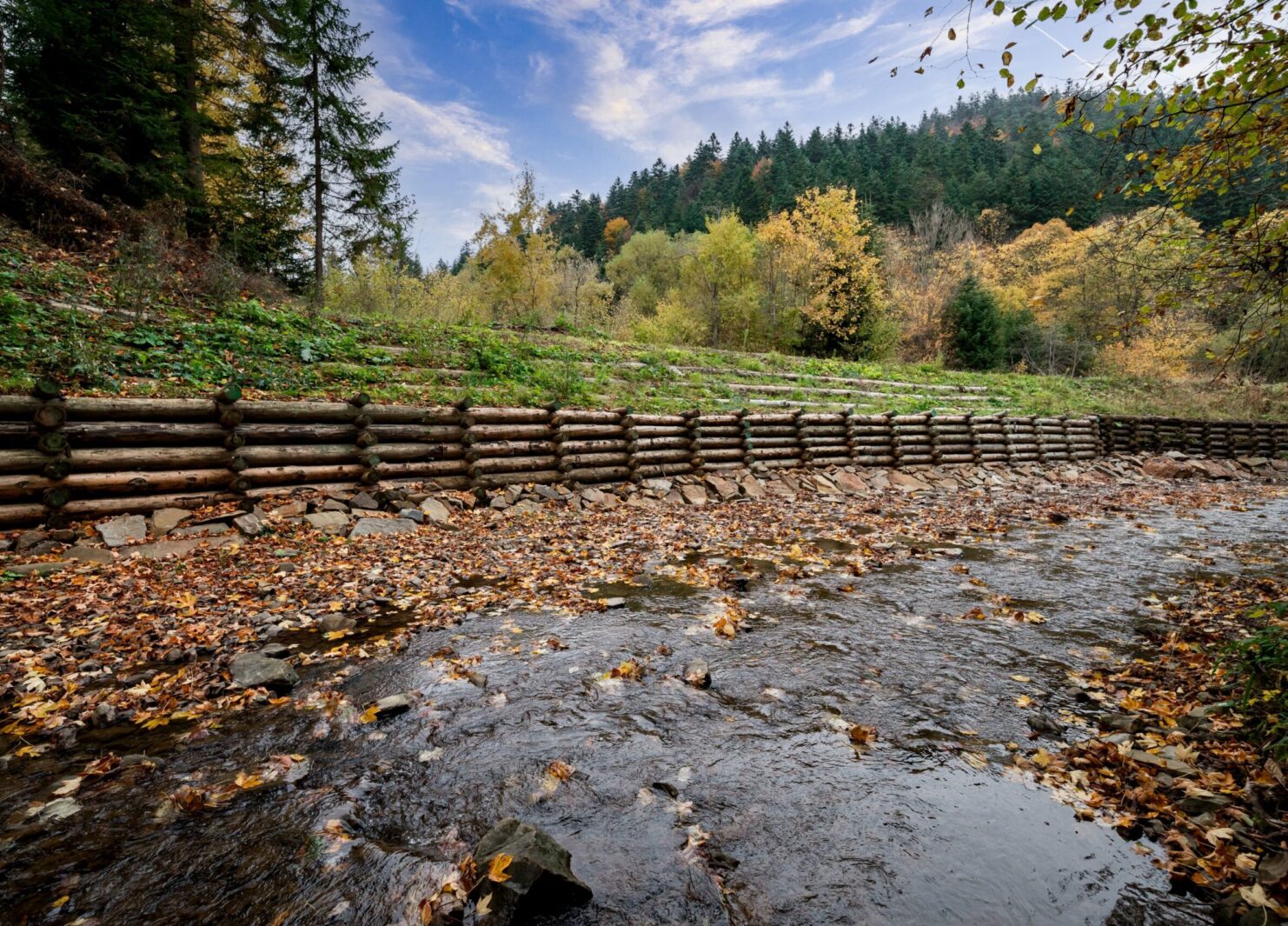Forests and the water cycle: adapting Poland’s mountain forests to climate change
Forests cover 41% of Europe’s mountain soils and play a vital role in balancing the hydrological cycle. Their ability to store and redistribute water makes forests an essential asset in the face of climate change and extreme events such as heavy rainfall. In Poland, the State Forests have been active in adapting to climate change by maintaining and strengthening the water storage capacity of mountain forests.
Contribution of forests to the hydrological cycle
Forests play an important role in the water cycle. The forest canopy intercepts much of the rainfall, and forest soils absorb and filter water before redistributing it to rivers, groundwater, and other wetlands. The retention capacity of forests therefore has a significant influence on the quantity of surface water and the timing of its return to the ground.
This water storage capacity is particularly important for risk management, including climate risks associated with extreme weather events. Forests can retain excess rainfall, preventing heavy run-off and flooding. Conversely, during periods of severe drought, forests help to maintain a hydraulic balance that limits the risk of fire.
Maintaining the water retention capacity of forests can therefore help prevent climate risks and help mountain areas adapt to climate change.
Water erosion prevention and small-scale retention in mountain forests
In Poland, the State Forests implemented a project to strengthen the resilience of mountain forest ecosystems to the threats posed by climate change. Based on the role of forests in the water cycle, the project aimed to reduce the impact of floods, droughts and fires on forests and surrounding areas.
Forest districts involved in the project implemented investments such as:
- construction, conversion or reconstruction of small retention reservoirs and dry tanks (dry reservoirs).
- improving the condition of and protection of wetlands, thanks to small-scale dams in forest ditches, such as thresholds, damming up devices, or small water gates.
- anti-erosion development of roads and no longer used logging trails (especially water bars or wooden hurdles on slopes); some of these facilities help to store or disperse water on slopes too (e.g. water bars equipped with disperse hurdles or ended with small holes that retain rainwater);
- securing the facilities of forest infrastructure against excessive water erosion caused by violent precipitation (e.g. strengthening slopes along stream banks, applying rock riprap or planting plants and bushes);
- the conversion or demolition of hydrotechnical facilities (dams, small culverts) unsuitable to flood waters which are replaced with fords, bridges, and culverts with a larger diameter of opening; what’s more, constructions of this kind also allow to maintain the biological continuity of the watercourse (migration of aquatic organisms, rubble transportation).
A significant part of the investment in the project involved the pre-existing infrastructure of the State Forests (mainly retention reservoirs and water flow regulators) which had lost its functionality or had been faulty. All undertakings combined environmentally friendly technical methods and materials, while minimising concrete or steel elements. They enabled the free movement of aquatic organisms and made the facilities well-suited to the local landscape.
This project was carried out by 47 forest districts in 5 mountain regions: Lower Silesia, Opole, Silesia, Lesser Poland and Podkarpackie. In total, it is estimated that the project helped to retain an additional 400 000 m³ of water on in reservoirs in the targeted forest areas (this does not include water retained in the soil).

